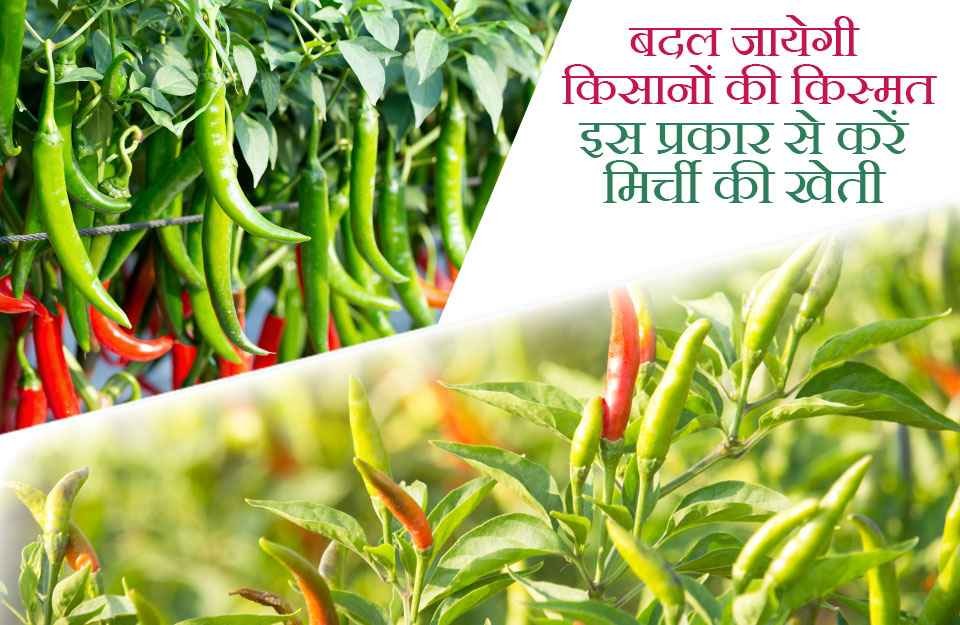
Chili is cultivated across several states in India, primarily as a spice crop and cash crop. Its absence leaves a void in the taste of various vegetables and dishes. The market demand for chili is consistently high due to its rich content of essential vitamins A and C, making it a crucial dietary element. Green chili, pickles, and dried red chili are commonly used in spice mixes. In Madhya Pradesh, the largest chili market is situated in the Bediya village of the Kharagone district, while the Dhamnod chili market in Dhar district is also renowned.
The chili crop typically matures within 140 to 180 days and can be sown in fields from June 15th to July 15th. Both red and green chilies can be harvested from the same plant, and each plant can yield chili 8 to 10 times in a season. Chili finds its usage in salads, chutneys, pickles, and various spice blends. Additionally, chili consumption is associated with benefits for eye health and heart conditions.
Chili cultivation can occur thrice a year, usually during the monsoon and summer seasons. The initial step involves seeding in a nursery to prepare seedlings. For this purpose, sow seeds in the nursery between May-June or February-March for summer crops. One kilogram of seeds and 250 grams of nursery seeds per hectare are adequate for seedling preparation. Thoroughly plow the nursery site and create raised beds, each 1 meter wide, 3 meters long, and elevated 10-15 cm above ground level.
Chili cultivation thrives in temperatures ranging between 15-35 degrees Celsius and a humid climate, making it suitable for both warm and subtropical regions. It can be cultivated in hot and humid areas with ease. When temperatures surpass 40 degrees Celsius, chili plants' fruits and flowers may start falling off. Excessive heat negatively impacts chili growth, leading to flower and fruit drop. Regions with high humidity should consider early sowing. An annual rainfall of 800-1000 mm is ideal for chili cultivation. The optimal soil for chilies is loamy soil with good drainage, rich in organic matter. The soil pH should range between 6 to 7.5.
Chili seedlings are ready for transplanting into the field after 4-5 weeks in the nursery. For the summer crop, rows should be spaced 60 cm apart, with 35 to 40 cm between plants. In the monsoon crop, row spacing should be 45 cm, with 30 to 45 cm between plants.
Improved Chili Varieties
Fertilizers and Manure: Before sowing, it is advisable to mix well-decomposed cow dung manure at the rate of 150 to 250 quintals per hectare into the field. For a good chili yield, the soil should be prepared with 70-80 kilograms of nitrogen, 40-45 kilograms of phosphorus, and 40-45 kilograms of potassium per hectare at the time of land preparation, with the remaining nitrogen divided into two equal parts and applied to the standing crop 25-45 days after sowing. After evenly distributing the remaining amount of fertilizer in the field 30 to 45 days after land preparation, irrigation should be done immediately.
Chili Irrigation Light irrigation is necessary immediately after planting chili seedlings. Irrigation should be done every 5 to 7 days during summers and as per requirement during the monsoon. Irrigation should be carried out using sprinklers or the furrow method.
Diseaseand And Management:
Read More... Farmer will increase income cumin cultivation, Know Complete information
Harvesting and Yield:
Green chilies can be harvested 18-20 days after fruit formation. For red chilies, harvesting should be done when the green chilies turn red after one or two rounds of picking. Green chilies typically yield around 100 to 150 quintals per hectare, while dried red chilies yield 20-25 quintals per hectare. Bell pepper production can yield 150-200 quintals per hectare.